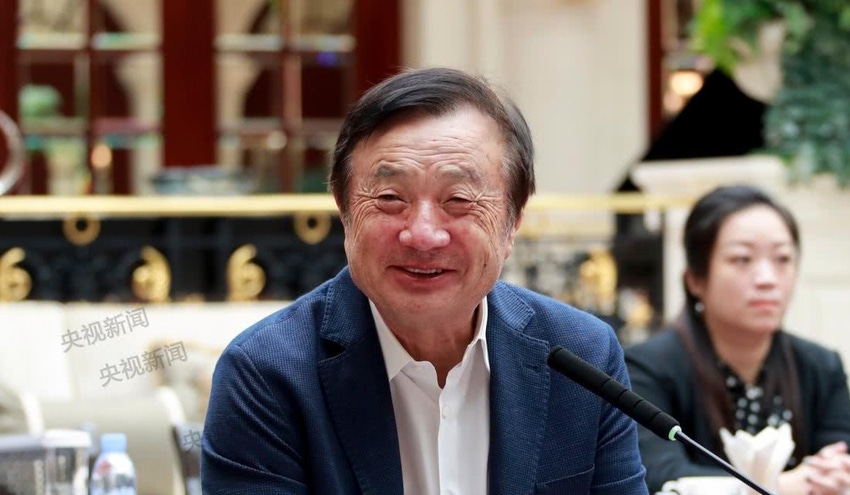Huawei founder Ren Zhengfei appears to be little more than a celebrity spokesperson nowadays, but a recent interview suggests the vendor is just fine with its US shunning.
July 5, 2019

Huawei founder Ren Zhengfei appears to be little more than a celebrity spokesperson nowadays, but a recent interview suggests the vendor is just fine with its US shunning.
Speaking to the Financial Times, Ren has once again been called into action to address the tensions between China and the US, as a result of which, Huawei has become a prime target for anyone hoping to inflict damage on the worlds’ second largest economy. The message from Ren is relatively simple; we’re doing OK and we’ll move away from US suppliers.
Such comments will certainly set off alarm bells in the offices of some US semiconductor firms, but it should hardly come as a surprise. The ‘Made in China 2025’ strategy might be unpopular with the US and Europe, but it is by no-means a secret.
‘Made in China 2025’ is an initiative set into action by Chinese Premier Li Keqiang during 2015. Through this initiative, the Chinese Government wants to evolve the perception of the country, ditching the ‘world’s factory’ tagline and moving up the value chain towards higher value products and services. The Government will be contributing $300 billion to the project to enable China to compete with the US.
This plan has been heavily criticised by the US for a number of reasons, but ultimately it all boils down to one; this is a genuine threat to the technological domination of the US on the global scene.
Of course, there are plenty of reasons not to like the idea. Some have suggested it violates the World Trade Organization (WTO) rules on self-sufficiency. Others have said trade secrets have been stolen from foreign companies or unfairly obtained through forced joint-ventures. For ‘Made in China 2025’, companies have to move up the value chain, targeting growth industries such as AI or medicine, and these smarts have to come from somewhere.
However, you always have to bear in mind the end-result irrelevant of path taken to get there. If ‘Made in China 2025’ succeeds, the US will no-longer be the dominant force in the technology world, and other economies could be shattered if China replaces imported goods with domestic.
In the latest interview, Ren is suggesting that even if there is a reprieve from President Donald Trump following the G20 summit last weekend, Huawei will continue to move its supply chain out of the US. Perhaps this is the catalyst which was needed to kick the ‘Made in China 2025’ concept up another gear.
“The US is helping us in a great way by giving us these difficulties,” said Ren. “Under external pressure, we have become more united than ever.
“If we aren’t allowed to use US components, we are very confident in our ability to use components made in China and other countries.”
Although there has been a concession from Trump with regard to the ban facing Huawei, some might view this pardon with scepticism. The President’s opinion seems to change more often than the tides so why would any organization pins its hopes and aspirations on the door of the Oval Office. Instead of a power demonstration, the US seems to have pushed the Chinese further towards autonomy.
While it is far from confirmed, we strongly suspect the huffing and puffing from the White House was little more than a demonstration of power. Huawei’s entry onto the Entity List might have been an aggressive move to gain the upper-hand in trade talks with the Chinese; look what we did to ZTE last year, the US appears to be saying, so play nice or we’ll do the same to Huawei.
But it doesn’t seem to have worked; Huawei is still alive and still OK, if you listen to Ren.
How OK Huawei actually is remains to be seen. Ren has been wheeled out to put a positive spin on the situation, but the picture is rather gloomy. Smartphone shipments are set to decline by 40-60% over the remainder of the year, Google hasn’t said it is once again on friendly terms with Huawei despite Trump’s amnesty, and some have questioned whether China is capable of filling the semiconductor hole created through the China/US vacuum.
Huawei has done a lot to add diversity to its supply chain in recent years, while also moving numerous operations to its own fabless semiconductor company HiSilicon, but can it satisfy its appetite for more specialised components? Huawei works with a number of US firms who have niche operations, Qorvo supplies radio-frequency systems and solutions for Huawei for example, and when it comes to specialised components, the US rules the world.
For certain segments of the semiconductor industry, field programmable gate arrays as another example, and China has not been able to replicate the US success just yet. Despite what Ren says about moving Huawei’s supply chain out of the US, it will still be reliant for some incredibly important cogs.
One way of viewing this situation is that there is a short-term demonstration of power. Without the likes of Xilinx, Qualcomm, Qorvo, NeoPhotonics and numerous other semiconductor businesses, Huawei cannot produce the products it is promising customers. Not yet at least.
But long-term, perhaps this approach is simply forcing ‘Made in China 2025’ to accelerate and eroding the control the US has globally over some very high-value, highly profitable segments. Prior to the trade war, US companies were inside the tent. Admittedly conditions were not perfect, but they were inside not outside.
Perhaps this is the watershed moment; companies are going to be forced out as companies like Huawei increasingly look for domestic suppliers, and once they find them (by luck, convenience or necessity) there is no coming back.
About the Author(s)
You May Also Like








.png?width=300&auto=webp&quality=80&disable=upscale)


_1.jpg?width=300&auto=webp&quality=80&disable=upscale)


.png?width=800&auto=webp&quality=80&disable=upscale)